Comprehensive Review on the Structural Diversity and Versatility of Multi-Resonance Fluorescence Emitters: Advance, Challenges, and Prospects toward OLEDs
- PMID: 40344420
- PMCID: PMC12291210
- DOI: 10.1021/acs.chemrev.5c00021
Comprehensive Review on the Structural Diversity and Versatility of Multi-Resonance Fluorescence Emitters: Advance, Challenges, and Prospects toward OLEDs
Abstract
Fluorescence emitters with a multiple-resonant (MR) effect have become a research hotspot. These MR emitters mainly consist of polycyclic aromatic hydrocarbons with boron/nitrogen, nitrogen/carbonyl, and indolocarbazole frameworks. The staggered arrangement of the highest occupied molecular orbital and the lowest unoccupied molecular orbital facilitates MR, resulting in smaller internal reorganization energy and a narrower emission bandwidth. Optimal charge separation suppresses the energy gap between singlet and triplet excited states, favoring thermally activated delayed fluorescence (TADF). These MR-TADF materials, due to color purity and high emission efficiency, are excellent candidates for organic light-emitting diodes. Nevertheless, significant challenges remain; in particular, the limitation imposed by the alternated core configuration hinders their diversity and versatility. Most existing MR-TADF materials are concentrated in the blue-green range, with only a few in red and near-infrared spectra. This review provides a timely and comprehensive screening of MR emitters from their pioneering work to the present. Our goal is to gain understandings of the MR-TADF structure-performance relationship from both basic and advanced perspectives. Special emphasis is placed on exploring the correlations between chemical structure, photophysical properties and electroluminescent performance in both depth and breadth with an aim to promote the future development of MR emitters.
Figures











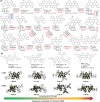





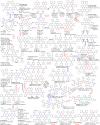
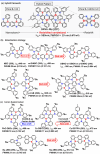
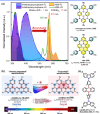





















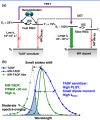







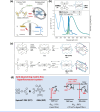
Similar articles
-
Engineering Intermolecular Packing Mode of Oxygen-Bridged Cyclized Boron-Based MR-TADF Emitters Enables High-Efficiency Deep-Blue Narrowband OLEDs.Angew Chem Int Ed Engl. 2025 Jul 29:e202513129. doi: 10.1002/anie.202513129. Online ahead of print. Angew Chem Int Ed Engl. 2025. PMID: 40734386
-
Developing Red and Near-Infrared Delayed Fluorescence Emission in Nitrogen-Substituted Donor-Acceptor Polycyclic Hydrocarbon OLED Emitters: A Theoretical Study.J Phys Chem A. 2025 Mar 13;129(10):2396-2410. doi: 10.1021/acs.jpca.4c07345. Epub 2025 Feb 26. J Phys Chem A. 2025. PMID: 40009024 Free PMC article.
-
Chiral Selenium-Integrated Multi-Resonant Thermally Activated Delayed Fluorescent Emitters Showing Improved Reverse Intersystem Crossing Rate.Angew Chem Int Ed Engl. 2025 Aug 11;64(33):e202506999. doi: 10.1002/anie.202506999. Epub 2025 Jun 22. Angew Chem Int Ed Engl. 2025. PMID: 40493762 Free PMC article.
-
Overview on the Thermally Activated Delayed Fluorescence and Mechanochromic Materials: Bridging Efficiency and Versatility in LECs and OLEDs.Materials (Basel). 2025 Jun 9;18(12):2714. doi: 10.3390/ma18122714. Materials (Basel). 2025. PMID: 40572847 Free PMC article. Review.
-
Recent Advances in Concentration Quenching-Resistant Multiresonance Thermally Activated Delayed Fluorescence Emitters.Chemphyschem. 2025 Jul 18;26(14):e202500201. doi: 10.1002/cphc.202500201. Epub 2025 May 27. Chemphyschem. 2025. PMID: 40323099 Review.
Cited by
-
Single-component-based multicolor emissions enabled by symmetry breaking.Nat Commun. 2025 Aug 30;16(1):8130. doi: 10.1038/s41467-025-63519-7. Nat Commun. 2025. PMID: 40885774 Free PMC article.
References
-
- Ma Y., Zhang H., Shen J., Che C.. Electroluminescence from triplet metalligand charge-transfer excited state of transition metal complexes. Synth. Met. 1998;94(3):245–248. doi: 10.1016/S0379-6779(97)04166-0. - DOI
-
- Baldo M. A., O’Brien D. F., You Y., Shoustikov A., Sibley S., Thompson M. E., Forrest S. R.. Highly efficient phosphorescent emission from organic electroluminescent devices. Nature. 1998;395(6698):151–154. doi: 10.1038/25954. - DOI
Publication types
LinkOut - more resources
Full Text Sources
Other Literature Sources
Miscellaneous

